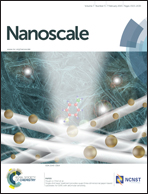Forces in yeast flocculation
Abstract
In the baker's yeast Saccharomyces cerevisiae, cell–cell adhesion (“flocculation”) is conferred by a family of lectin-like proteins known as the flocculin (Flo) proteins. Knowledge of the adhesive and mechanical properties of flocculins is important for understanding the mechanisms of yeast adhesion, and may help controlling yeast behaviour in biotechnology. We use single-molecule and single-cell atomic force microscopy (AFM) to explore the nanoscale forces engaged in yeast flocculation, focusing on the role of Flo1 as a prototype of flocculins. Using AFM tips labelled with mannose, we detect single flocculins on Flo1-expressing cells, showing they are widely exposed on the cell surface. When subjected to force, individual Flo1 proteins display two distinct force responses, i.e. weak lectin binding forces and strong unfolding forces reflecting the force-induced extension of hydrophobic tandem repeats. We demonstrate that cell–cell adhesion bonds also involve multiple weak lectin interactions together with strong unfolding forces, both associated with Flo1 molecules. Single-molecule and single-cell data correlate with microscale cell adhesion behaviour, suggesting strongly that Flo1 mechanics is critical for yeast flocculation. These results favour a model in which not only weak lectin-sugar interactions are involved in yeast flocculation but also strong hydrophobic interactions resulting from protein unfolding.


 Please wait while we load your content...
Please wait while we load your content...